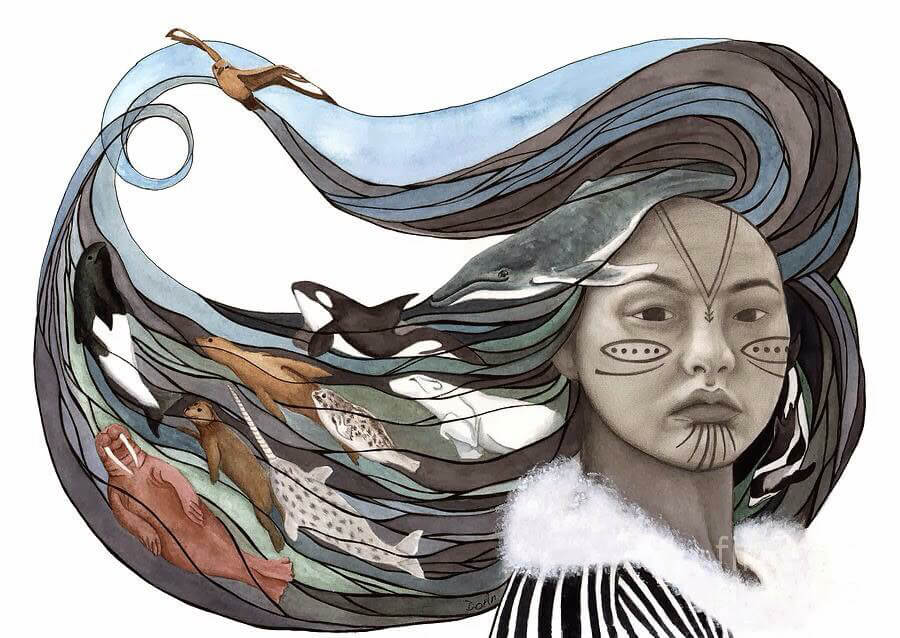Today I want to write about Sedna, with whom I’ve been engaging deeply lately, as part of the work on my current novel, which includes her as one of the characters. Sedna is a goddess of the high Arctic, of Inuit and Inupiat tribes across Alaska, Canada, and Greenland. She rules the seas of the Arctic, and the animals that live there. Communities in the Arctic region are dependent on those animals for their livelihood, so Sedna is a highly important part of the mythos of the North.
Her story is a creation myth; a way of explaining the world and how it came to be the way it is. Myths are a fluid thing, like the psyche of the humans from which they spring, so there is no way to “nail down” the absolute version of any story. Sedna’s story, like so many other myths around the world, is a changeable one. Her story does start at the beginning of time, and it serves as an explanation as to the origins of the sea creatures of the Arctic Ocean.
This is how her story is told in The Sea Woman: Sedna in Inuit Shamanism and Art in the Eastern Arctic, by Frederic Laugrand and Jarich Oosten.
Long ago, there was a woman who did not want to marry. Her father threw her into the sea and cut off her finger joints, which changed into sea mammals. She lived on the bottom of the sea and withheld the sea game from the Inuit whenever she was angry with them. (p. 17)
It was the role of the shaman to reach out to Sedna when she was angry, to travel into the spirit world to approach and placate her, to coax her out of her temper. “The persons, who can see the souls of men and of animals and are able to visit Sedna, are called angakut (angakkuit).”
In Monday’s post on Athena I touched briefly on her role as a bridge between the cthonic feminine energies of the Neolithic European goddess traditions and the new traditions of the sky gods, represented by Zeus and Apollo. In Sedna’s story, we see the cthonic feminine tradition remaining strong and vibrant in the Arctic to this day. In the myths of the Inuit (and of the Haida, which I’ve talked about before on this blog) the realm of the gods is not in the heavens, as it is in other, perhaps more familiar traditions, but under the sea. Shamans and heroes travel downward and under the waves to interact with the gods, rather than traveling skyward.
Sedna’s story fascinates me, because it starts with her in a vulnerable position, being cast out by her father for disobedience, having her fingers cut off as she grasps the edges of his kayak, her last remaining connection to her ordinary world of childhood. Once this severing has taken place, she grows in her power and anger, until she becomes among the most powerful and influential of the gods of the Arctic regions.


Can you tell me the name of the artist who created this picture?
I’m afraid not. I found it on Pinterest.